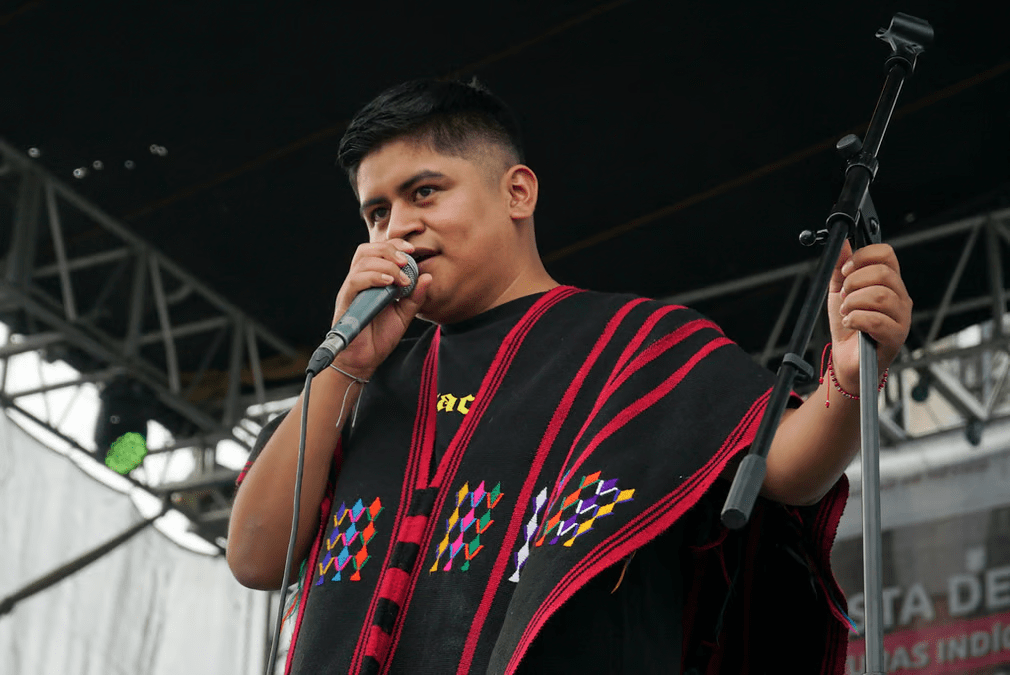
Mexican Rapper Carlos Guadalupe Hernández, known as Carlos CGH, Revives Triqui Language and Culture Through Contemporary Rap Performance in Mexico City
Fiona Nanna, ForeMedia News
6 minutes read. Updated 12:13PM GMT Fri, 23August, 2024
On a vibrant August evening in Mexico City, the heart of Indigenous culture pulsed to the rhythm of contemporary rap as Carlos Guadalupe Hernández, known by his stage name Carlos CGH, took the stage. The 24-year-old rapper has emerged as a powerful voice for the Triqui community, an Indigenous group from Oaxaca, using his music to weave together the threads of tradition and modernity.
Carlos CGH’s performance was a poignant blend of Spanish verses and rhymes in Triqui, his native language, a linguistic heritage he is determined to preserve through the art form of rap. Triqui, a Mixtec language spoken in Oaxaca, holds within its centuries of culture and history, and Carlos’s commitment to it reflects a broader movement among Indigenous artists to reclaim and revitalize their languages.
As the night unfolded, Carlos wore a striking black and red “gabán,” a traditional garment of the Triqui people, symbolizing his deep connection to his roots. The rapper’s hometown, San Juan Copala, located in the municipality of Santiago Juxtlahuaca, has been a focal point of the struggles facing the Triqui people. For over 80 years, they have endured political and social conflicts, exacerbated by illegal activities like arms trafficking, drug trafficking, and logging. These conflicts have led to the displacement of many Triqui families, forcing them to seek refuge in other parts of Mexico, including the bustling metropolis of Mexico City.
Carlos’s journey began far from the capital. He was born in Santiago Juxtlahuaca but relocated at the age of six to Huajuapan de León, another Oaxacan city. His early years were shaped by the rich musical traditions of Oaxaca-Mixteca artists, and by the age of 12, he had already begun exploring music as a percussionist in a local band. It was in 2013, however, that he discovered rap—a genre that he describes as “love at first sight.”
In Oaxaca, a state renowned for its linguistic diversity, Indigenous languages like Mixtec, Zapotec, and Cuicatec have found new life in the realm of rap. Carlos CGH stands among a group of Indigenous artists who use their music to celebrate and protect their cultural heritage. Yet, this vibrant scene has not been immune to the violence that plagues Oaxaca. Just last month, the community mourned the loss of Rosty Bazendu, a passionate Zapotec lyricist, who was tragically killed.
Despite these challenges, Carlos remains steadfast in his mission to highlight the positive aspects of the Triqui community. “When you look up the Triqui community on the internet, a lot of things are going to come up regarding the things that are commonly known about us, which are some of the problems we have,” he remarked. “I don’t get too much into those topics, but I come here to talk about what’s within my community — the celebrations, the craftsmanship, the children, everyone who has stood out.”
Carlos’s latest release is a tribute to the resilience and spirit of his people. The song, dedicated to Santiago Juxtlahuaca, opens with lively arrangements of traditional Oaxacan banda music, blending the old with the new in a way that resonates deeply with his audience. The performance reached a crescendo with “El Baile del Diablo,” or “Devil’s Dance,” a traditional dance from the Oaxacan coast that had the crowd cheering in unison.
As the night drew to a close, Carlos CGH stood on stage, his voice filled with pride and conviction. “I will never forget my culture, tradition, and language,” he declared, a sentiment that reverberates through his music and his mission to keep the Triqui language alive.

